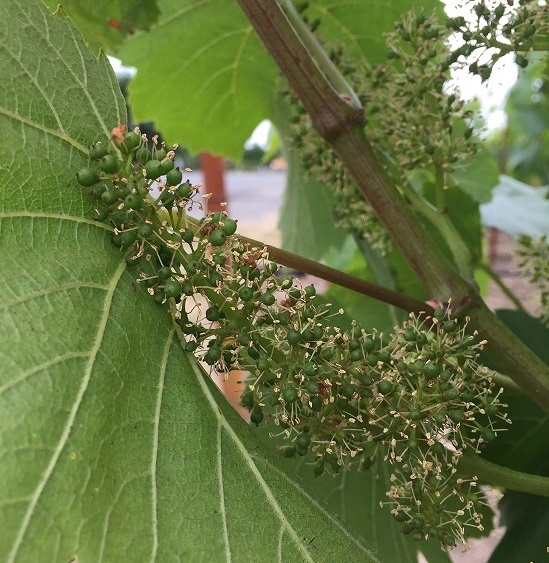Right now, there’s a lot of sex in the vineyards. Strictly between the grapes of course. Cultivated vines are hermaphroditic (the reproductive organs of both sexes are simultaneously present). Thus, come spring, grapevines pollinate themselves. But only if the moment is right. Grapes, as it turns out, are rather particular. Too much wind? Forget it. A little chill in the air? The grapes get a headache. Rain? May as well take a cold shower. Only when it’s calm, peaceful and perfectly warm, will grapes procreate.
The tender process is called “flowering,” and indeed, if all goes well, tiny white flowers will result. You can see them right now in vineyards all over California. With time, these tiny white flowers will become clusters of grapes. But if circumstances go awry and no flowers appear, there will be no grapes. (Sorry buddy).
With wild grapevines (as opposed to cultivated ones), the situation is different. Wild vines are usually either female or male, although a small percentage are naturally hermaphroditic. As a result, wild female plants can only produce fruit if there is a wild male nearby that can provide pollen. (Male plants, alas, are barren and fruitless.)
Botanists suspect that the first peoples to have cultivated grapevines–perhaps as long ago as 7,000 to 5,000 BC – would have initially selected only female plants, since these of course would have been the fruitful ones. Ultimately, however, the females, without any males whatsoever, would have been unproductive too. Thus, over time, the vines chosen for cultivation (and propagation) would have been the vines that naturally possessed both female and male sex organs.
It’s good to be a hermaphrodite.

